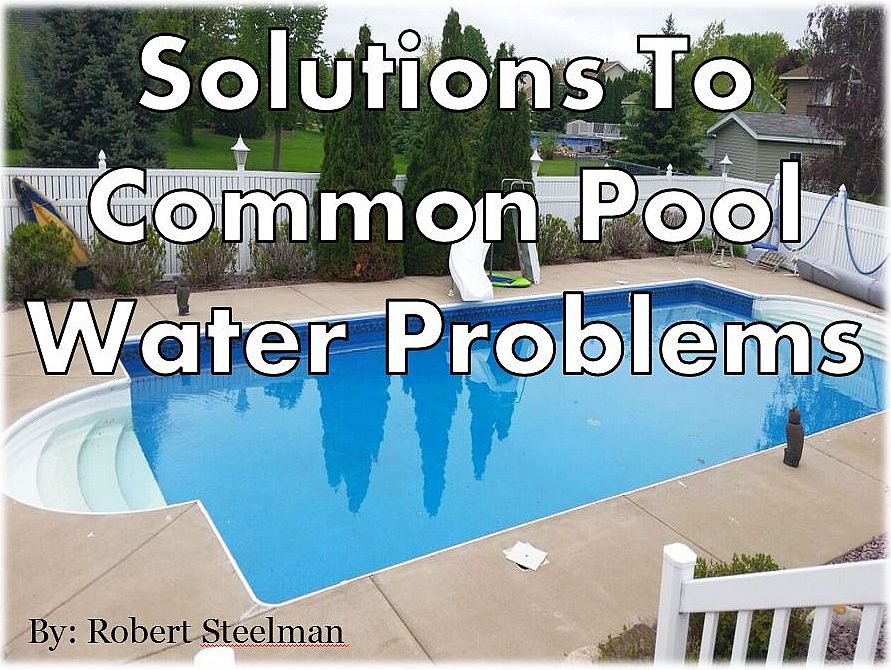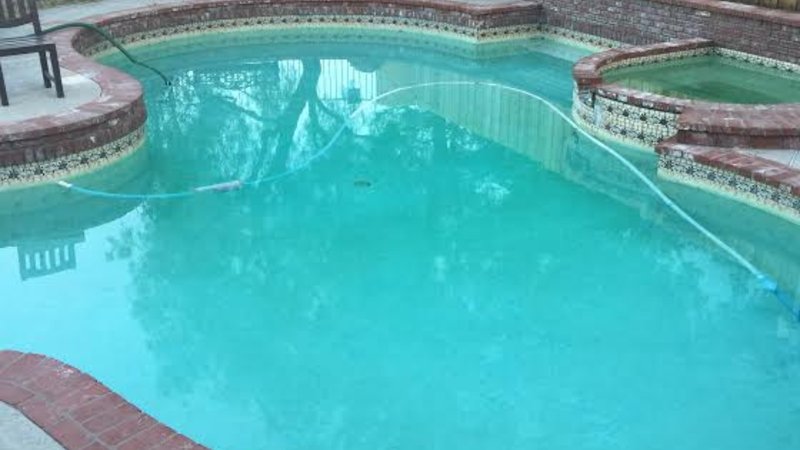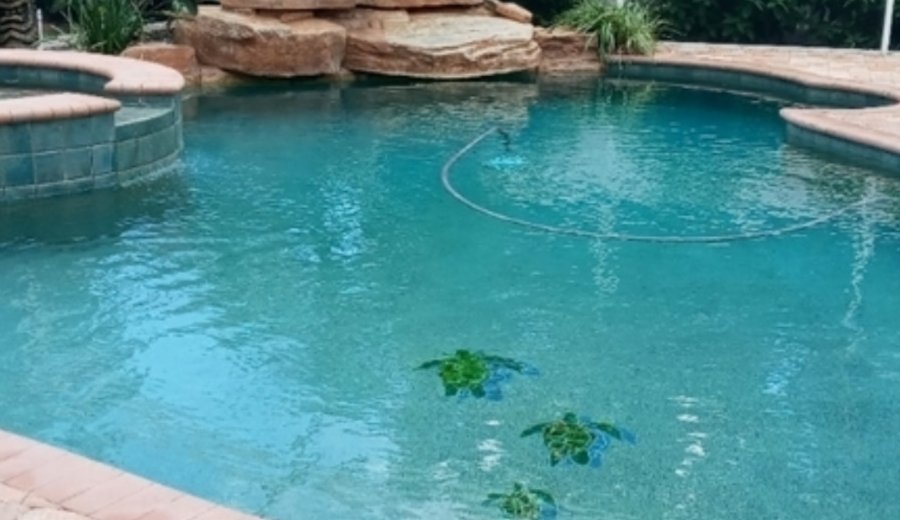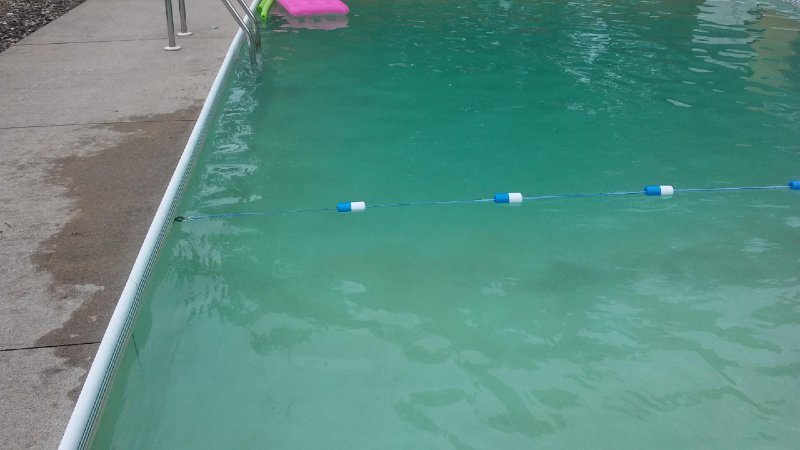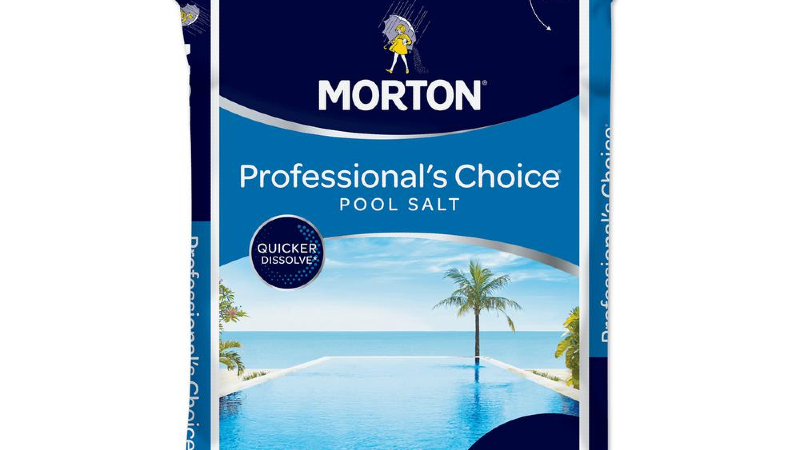Your Guide To A Salt Pool Chlorine Generator
Do you want your dream pool but don't think you can have it? Stop dreaming and start living with a salt water pool!! Over the last few years, salt water chlorinators and salt pools have risen in popularity. Pool owners have found that manually adding chlorine is not the only way to get chlorine into their pools. And some just want to make their pool lives just a little easier. That's the beauty of owning a salt water pool with a chlorine generator.
How Salt Water Chlorine Generators Work
Salt water chlorinators use a process called "electrolysis" to produce chlorine. The right amount of salt is added to the pool and the salt is then dissolved in the water. The salt water passes through the pool chlorine generator that has plates fitted inside the casing. Sometimes the plates are called "fins". The fins create an electrical current which produces chlorine gas. Utilizing this electrolysis, the dissolved salt in the water is converted into hypochlorous acid (HClO) and sodium hypochlorite which are the sanitizing agents that kill the nasty organic matter and bacteria in the pool.
These units can either be in-line or you can have a stand alone machine which are usually about the size of a dishwasher. Salt water generators have been around for many years now but have just recently enjoyed mass success due to people's chlorine allergies. There's also the the massive convenience of not needing to add swimming pool chlorine on a regular basis.
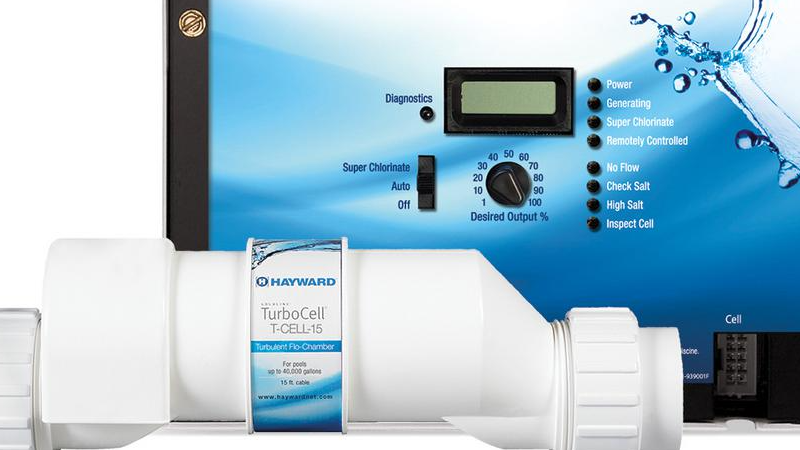
The Basic Parts Of A Chlorine Generator
The above video goes into great detail about salt pool and chlorine cells, but let's take a minute to review some highlights.
The Chlorine Cell
As already stated, the salt water passes through the cell, which in turn, produces chlorine. The titanium plates that are located inside the chlorine cell are coated with precious metals, sometimes with ruthenium or iridium.
The Control Board
The control board is the engine room, or nerve center, for your salt water pool. The control board gives you the freedom to increase or decrease the chlorine at will, along with power lights, maintenance lights, no flow indicators, etc...
How Long Does A Salt Water Chlorinator Last?
If you properly maintain your chlorine cell, you can expect it to last anywhere from 5 - 7 years. If you close your pool for the Winter your cell might experience a longer life. I've personally seen chlorine generators for salt pools last up to 12 years. Improper cleaning and sustained high calcium hardness levels can shorten its life. Your control board should be treated just like any other electrical device. Never get it wet and make sure to keep the cover closed. Only open it when needed.
How Much Does A Pool Chlorine Generator Cost?
The answer to this question depends upon your size pool. Obviously the larger the pool, the larger the cell will be, and that equals a higher price. Here are some good ballpark figures for different size pools. For this example, I'll be using the Hayward Goldline AQR9 AquaRite Electronic Salt Chlorination System for In-Ground Pools:
- For a 15,000 gallon pool, you can expect to pay around $700.
- For a 25,000 gallon pool, you can expect to pay around $750.
- For a 40,000 gallon pool, you can expect to pay around $870.
- For 40 lbs. of Morton Pool Salt you can expect to pay around $30.
Maintenance Tips For Salt Water Chlorinators
Regardless of what you may heard, chlorine generators do need maintenance from time to time. This quick list can help your chlorine generator last as long as it can.
- Maintain the correct salt level for your particular chlorine cell. This is normally between 2500 - 4500 ppm but always go by what the instructions say. For an average 20,000 gallon pool you will need 7-10 50 lb. bags to bring your saline level to the correct reading of 2500 - 4500 ppm.
- Try as best you can to maintain a low calcium hardness level. Never use calcium hypochlorite granular chlorine if you have a salt water generator. Scale buildup will lead to premature cell failure.
- Maintain a lower pH level, between 7.2 - 7.4. Salt pools absolutely LOVE to increase your pool's pH level. Keep some muriatic acid or dry acid on hand to maintain a lower pH.
- Clean your cell at least once during the swimming season if you close your pool, and clean it twice if you keep your pool open all year. Simply remove the unit from the plumbing and clean with a soft brush to remove any debris or deposits. For calcium deposits, it's recommended that a mixture of muriatic pool acid and water be used. I normally use 4 gallons of water to 1 gallon of pool acid, a 4:1 ratio. We have these cool plugs that screw into the bottom of our salt water chlorine cell. I fill the cell with the pool acid mixture and wait until the bubbling stops, about 5 minutes. I then pour the muriatic acid mixture out, rinse the unit with clean water, and re-install. Works like a charm every time.
Advantages Of A Salt Pool
Many people swear by their salt pools and chlorine generators. No more handling chlorine containers. No more pouring chlorine in your pool just to realize you now have bleach stains on your jeans. Here are some other benefits of having a salt pool:
1. The Water Feels Better
Imagine swimming in water and baby lotion. Yeah, that's a salt pool. The water feels very good on your skin.
2. Use Less Chlorine
No need to add additional chlorine or carry around bottles or bags. Your saltwater chlorine generator adds the chlorine for you. And as an added benefit, no more emergency trips to the grocery store for bleach.
3. Adjust The Chlorine Output
With a simple turn of a knob, you can adjust your pool's chlorine demand when needed.
4. Save Money On Chemicals
When you add enough salt at Spring start up, a saltwater system can hold you through the entire season without adding anymore salt.
Last Word About Pool Chlorine Generator
Whenever I need to do a pool shock, I ALWAYS turn off the power to the cell. By having a high volume of pool chlorine flowing through the pipes, we run the risk of burning the chlorine cell up if it's running. Better safe than sorry.
I encourage you to do your homework and choose the right salt water chlorine generator system for your specific needs and desires. Your family and swimming guests just might thank you.
What Other Visitors Have Said
Click below to see contributions from other visitors to this page...
How To Choose A Salt Water Chlorine Generator Not rated yet
How To Choose A Salt Water Chlorine Generator
by Ricky
How do I know what size salt water chlorine generator I need for my pool. I have a thirty three …
Why Do I Have To Clean My Salt Cell So Much Not rated yet
Why Do I Have To Clean My Salt Cell So Much
by Ron
I have a Compupool salt water generator which I have to clean every two weeks from the calcium build …
Specks In Water Only When Chlorine Generator On Not rated yet
When my chlorine generator is working I see small specks of something flowing through water. It is only noticeable at night against the glow of the pool …


